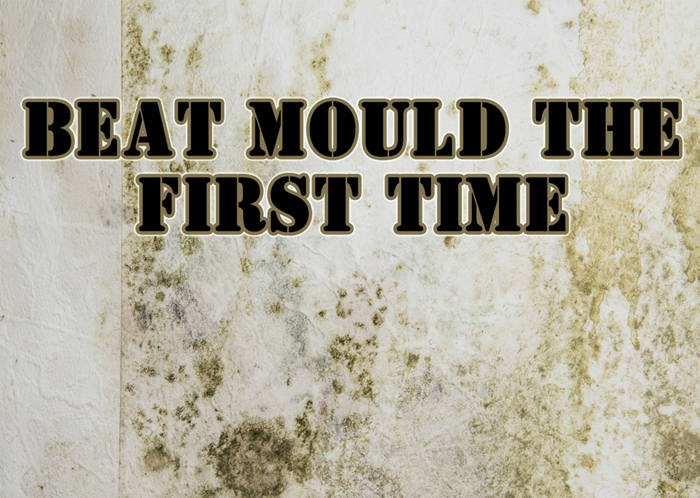
In this wet and wild weather the potential for water damage in your home is high. Maybe you have a leak in your roof, overflowing gutters, flooding coming under your door or maybe you just left the window open during a wild squall. Whatever the cause it is important that you clean up any moisture in your home immediately to prevent the onset of mould. Once mould sets in and grows indoors it can cause allergic reactions, lung irritation and set off asthma attacks.
If you see mould it is important to take care of it immediately, as not only will it continue to grow but it will damage the surface it’s growing on. Importantly you should not just fix the mould but ALSO the source of the water problem, otherwise it will just keeping back.
The surface that the mould is growing on will determine whether your problem is solvable or not. Solid items (non-porous) such as plastics and tiles should be easily treatable. Porous materials such as clothing, fabric, furniture and carpet will in most cases need to be disposed off, as the mould will be too hard to remove and will have already caused significant damage.
WARNING SIGN: If your wall paint is bubbling and peeling this is a warning sign that moisture is seeping into your wall. Do NOT simply paint over it - address any mould and the source of the leaking problem first. You may need to replace the plaster.
KILLING THE MOULD
Before you attempt to clean up your mould problem, assess the size and severity. If there is significant coverage – such as a square metre or more – it will be necessary to call a professional contractor for removal. Mould is toxic in large quantities and professionals will have proper equipment and will make sure that the infestation is entirely removed. Mould removalists are NOT simply cleaners so make sure they are certified. If you believe that your airconditioner is infected with mould make sure to have a professional clean it out before you use it.
In smaller cases your first step is to vacuum up the mould, but first check that your vacuum is equipped with a HEPA filter so that you are not sending the spores back into the air. Because you will be stirring up the pores when cleaning, make sure you cover your body with protective clothing and wear gloves, goggles and a face mask.
At the first sign of mould people usually reach for bleach, but this is not the best option. Bleach can kill mould in areas like the bathroom on tiles, bathtubs and counters, but is ineffective on many surfaces as well as corrosive and damaging to their surfaces. It will not work on non-porous areas such as wood, carpet and drywall, as it cannot penetrate the surface and will only kill the mould on the surface. It can also in some cases simply bleach the mould only making you think that the problem has been solved.
A good option is to fill a spray bottle with white vinegar and liberally apply to the surface. Vinegar causes mould spores to overeat and die, so it’s best to leave it on the surface for as long as possible before scrubbing to remove. Wiping with microfibre cloths is advisable as they can better access cracks and nooks. Borax, a chemical free, natural mineral powder, is another excellent option and can be combined with vinegar when tackling the infestation. You can usually find Borax in the laundry section of the supermarket. Either mix the Borax with water and use in a spray bottle or purchase a Borax based cleaner, apply to the area and allow it to sit for ten minutes. Then scrub the mould away. Borax will keep it from returning. Do not mix Borax with bleach as it reacts chemically and releases dangerous gases.
Borax and vinegar are both good treatments for mouldy clothes as well. You can purchase Borax washing machine liquid, or alternatively soak your clothing in a 50/50 vinegar & water solution overnight before washing them with normal detergent.
PREVENTION
Once you have removed the mould it’s is very important to fix the source of the moisture. If you have a leak in your pipes or your ceiling, call a plumber to fix the problem ASAP or it will simply continue to get worse. If you have mould in your airconditioner, don’t use it until you have had a professional air conditioning professional to service it. If your gutters are overflowing or leaking, organise a guttering service professional to clean and repair them.
Be aware and vigilant, and make sure that you dry any leaks or spills immediately. Dry or squeegee your shower and make sure to clean regularly, as mould needs organic matter to thrive. Make sure to make use of exhaust fans and open windows where possible when cooking or having a shower to vent the humidity. It's rainy so many of us are drying our clothing inside so it's important to vent the room to prevent moisture build up. Most of all, adequate building ventilation is crucial as inadequate air flow allows moisture to collect.
Hi there,
Would you like to receive home decor
ideas and DIY tips to your inbox?
Subscribe to our mailing list!

